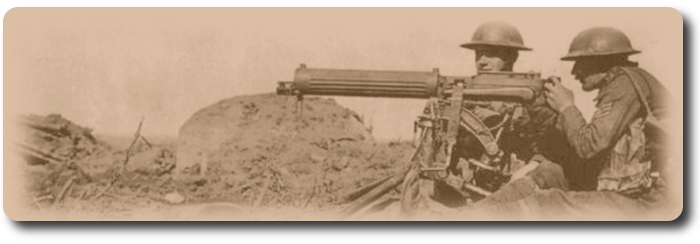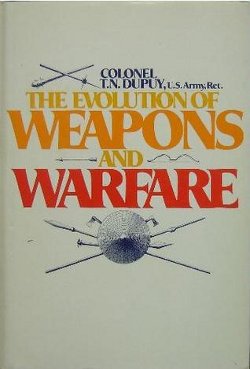Topic: Military Theory

Assimilation of New Weapons
 The Evolution of Weapons and Warfare, Colonel T.N. Dupuy, 1980
The Evolution of Weapons and Warfare, Colonel T.N. Dupuy, 1980
The invention of a weapon that is potentially more lethal is only the first of three steps toward realization of that lethality. It must be adopted by a military establishment, and it must be assimilated into tactics, doctrine and organization.

The invention of a workable weapon has not in the past guaranteed either that it would be promptly purchased by any armed force or that, if bought, it would be purchased in sufficient quantity to be standard issue.

It is fairly easy to ascertain from observation or from the record that a weapon has not been assimilated, that is, that its capabilities are not fully realized and it is not being used to the best advantage. It is almost as easy to recognize that a weapon has in fact been assimilated and is an effective part of a military establishment. But it is less easy to pinpoint exactly when the process of assimilation was accomplished.
When a radically new weapon appears and is first adopted, it is inherently incongruous with existing weapons and doctrine. This is reflected in a number of ways: uncertainly and hesitation in coordination of the new weapon with earlier ones; inability to use it consistently, effectively, and flexibly in offensive action, which often leads to tactical stalemate; vulnerability of the weapon and of its users to hostile countermeasures; heavy losses incident to the employment of the new weapon, or in attempting to oppose it in combat. From this it is possible to establish the following criteria of assimilation:
a. Confident employment of the weapon in accordance with a doctrine that ensures its coordination with other weapons in a manner compatible with the characteristics of each.
b. Consistently effective, flexible use of weapon in offensive warfare, permitting full employment of the advantages of superior leadership and/or superior resources.
c. Capability of dealing effectively with anticipated and unanticipated countermeasures.
d. Sharp decline in casualties for those employing the weapon, often combined with a capability for inflicting disproportionately heavy losses on the enemy.
There have been three basic preconditions historically for assimilation of new weapons or ideas:
1. An imaginative, knowledgeable leadership focused on military affairs, supported by extensive knowledge of, and competence in, the nature and background of the existing military system.
2. Effective coordination of the nation's economic, technological-scientific, and military resources.
3. Opportunity for battlefield experimentation as a basis for evaluation and analysis.
When these conditions have been present, there has usually been a time lag of approximately twenty years, or one generation, between the initial experimental adoption of a new weapon and its full assimilation. It is notable that this time lag does not seem to have changed much over the course of the past century, despite the fact that science and technology have been producing new weapons, or adaptations of weapons, in accelerating numbers and at an accelerated pace. When the conditions have not been present (which was frequently the case before 1830), the process of assimilation has been slower.
New weapons, or modifications of new weapons, have generally been developed because scientists, technicians, or soldiers have perceived an opportunity to develop a new weapon or improve an existing one. Only rarely have new weapons been designed for the specific purpose of coping with a tactical problem.
There has been a natural reluctance to make a sweeping change in tactics, or organization, by widespread adoption of a new and untried weapon before it has been thoroughly investigated under battle conditions. There is some evidence (not conclusive) that intelligent boldness in this respect can pay handsome dividends (as in the case of Prussian adoption of needle guns). Despite this reluctance and despite the likelihood that optimum assimilation will be impossible without battlefield testing, the increasing pace of invention is placing pressure on the military today to make such sweeping changes.

The German experience and those of the other great powers who have followed the German pioneering work in general-staff concepts and in related military affairs to national society as a whole suggest additional preconditions for assimilation in the mid-twentieth century:
a. There must exist industrial or developmental research institutions, basic research institutions, military staffs and their supporting institutions, together with administrative arrangements for linking these with one another and with top decision-making echelons of government.
b. These bodies must conduct their research, developmental, and testing activities according to mutually familiar methods so that their personnel can communicate, can be mutually supporting, and can evaluate each other's results.
c. The efforts of these institutions—in related matters—must be directed toward a common goal.

